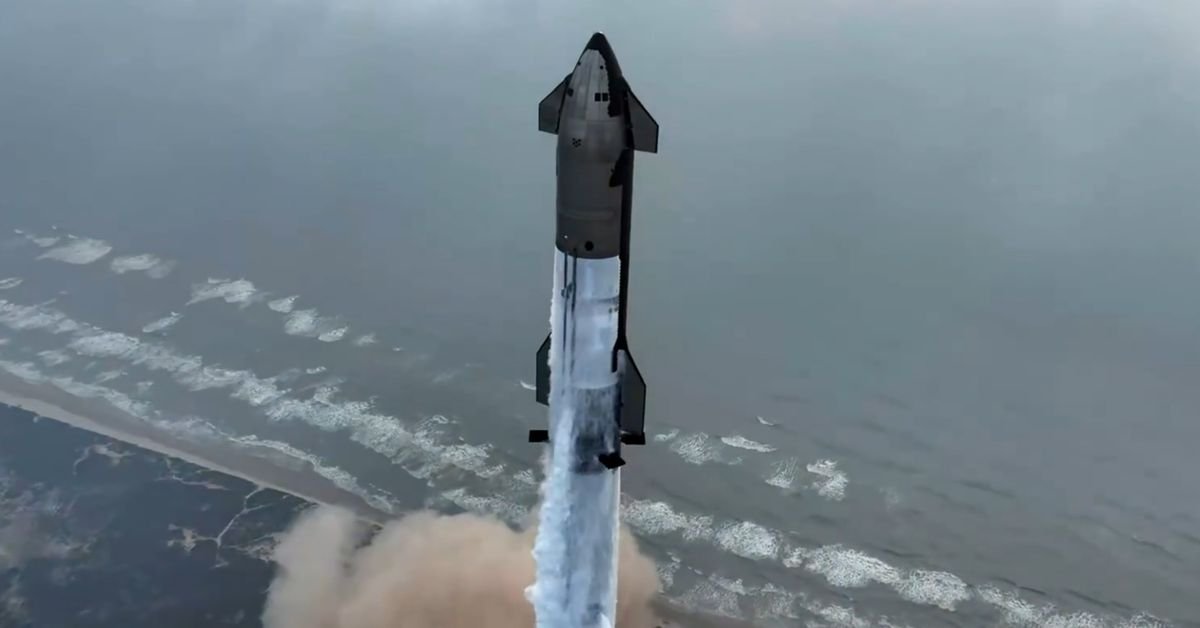[ad_1]
The fourth Starship Super Heavy flight test has ended with a splashdown in the Indian Ocean. The vehicle launched from its pad in Texas at 8:50AM ET, before successfully performing a hot-stage separation from its booster rocket. The Super Heavy booster then performed a landing burn as planned before it came down in the Gulf of Mexico.
The Starship vehicle continued along its planned flight path before reentry. Live camera views showed a damaged flap burning and starting to come apart. However, the vehicle stayed in one piece long enough for the engines to relight and perform a “soft landing.” In a tweet, Elon Musk said, “Despite loss of many tiles and a damaged flap, Starship made it all the way to a soft landing in the ocean!”
The two-stage 394-foot system, comprised of both the Super Heavy booster and Starship spacecraft, is the most powerful launch vehicle ever developed. Known collectively as Starship, its immense payload capacity should enable it to transport satellites, large quantities of cargo, and up to 100 people for future space missions. SpaceX designed both the craft and booster components to be fully reusable in a bid to dramatically lower the costs typically associated with space travel.
Today’s launch follows Starship’s three previous test flights. The last attempt in March successfully launched before it was “lost” shortly before its anticipated splashdown in the Indian Ocean. The craft performed several of its objective maneuvers before breaking apart during reentry, including its first full-duration ascent burn, hot-staging separation from its Super Heavy booster, and opening its payload door in space.
The first and second flight tests last year were less successful, with the Starship rocket exploding shortly after launch during both attempts. SpaceX has gathered data through these collective flight tests to improve the probability of success in future Starship launches, with the system expected to carry NASA astronauts back to the Moon during the Artemis III mission by “ no earlier than September 2025.”
[ad_2]
Source link





